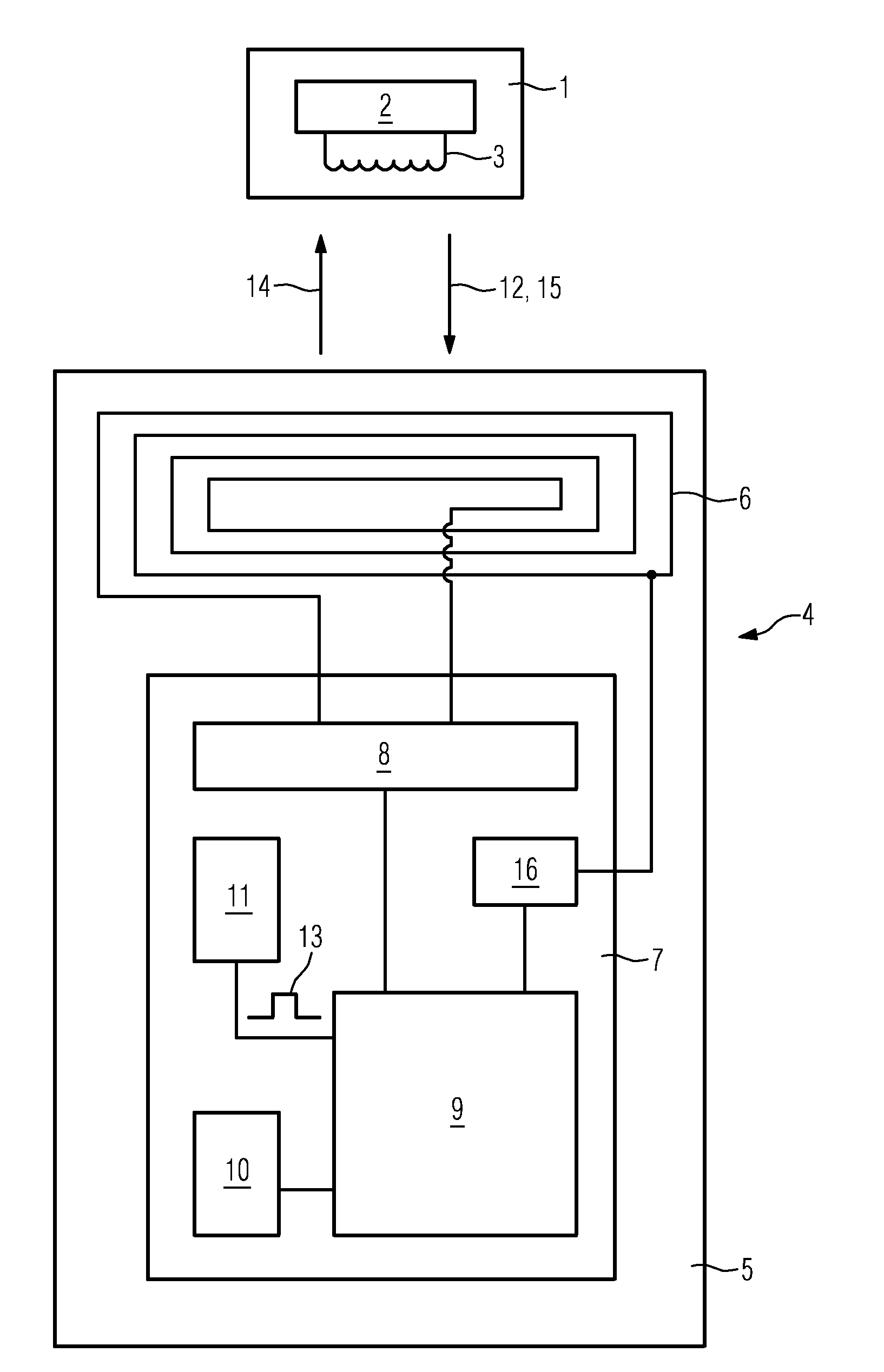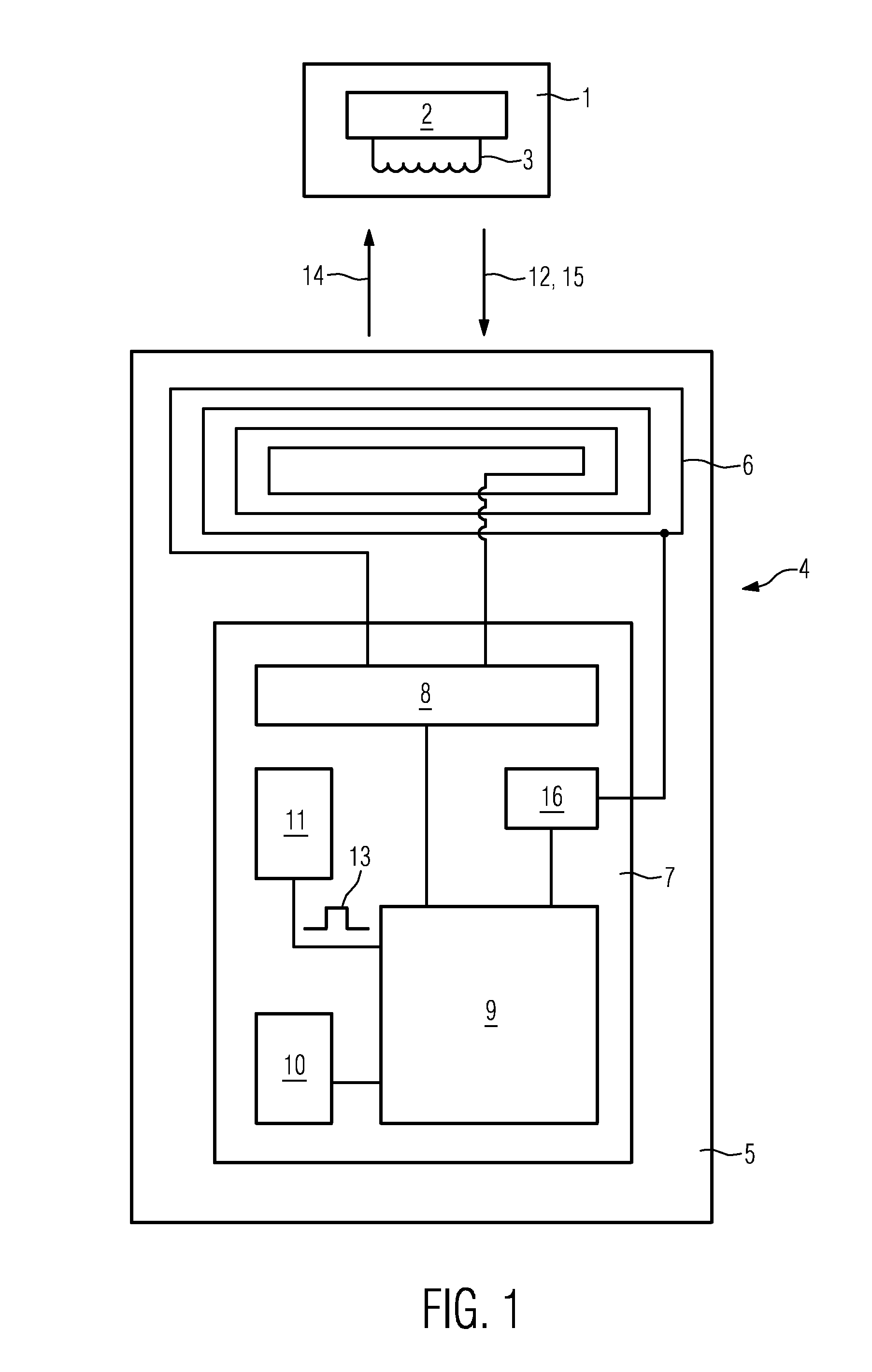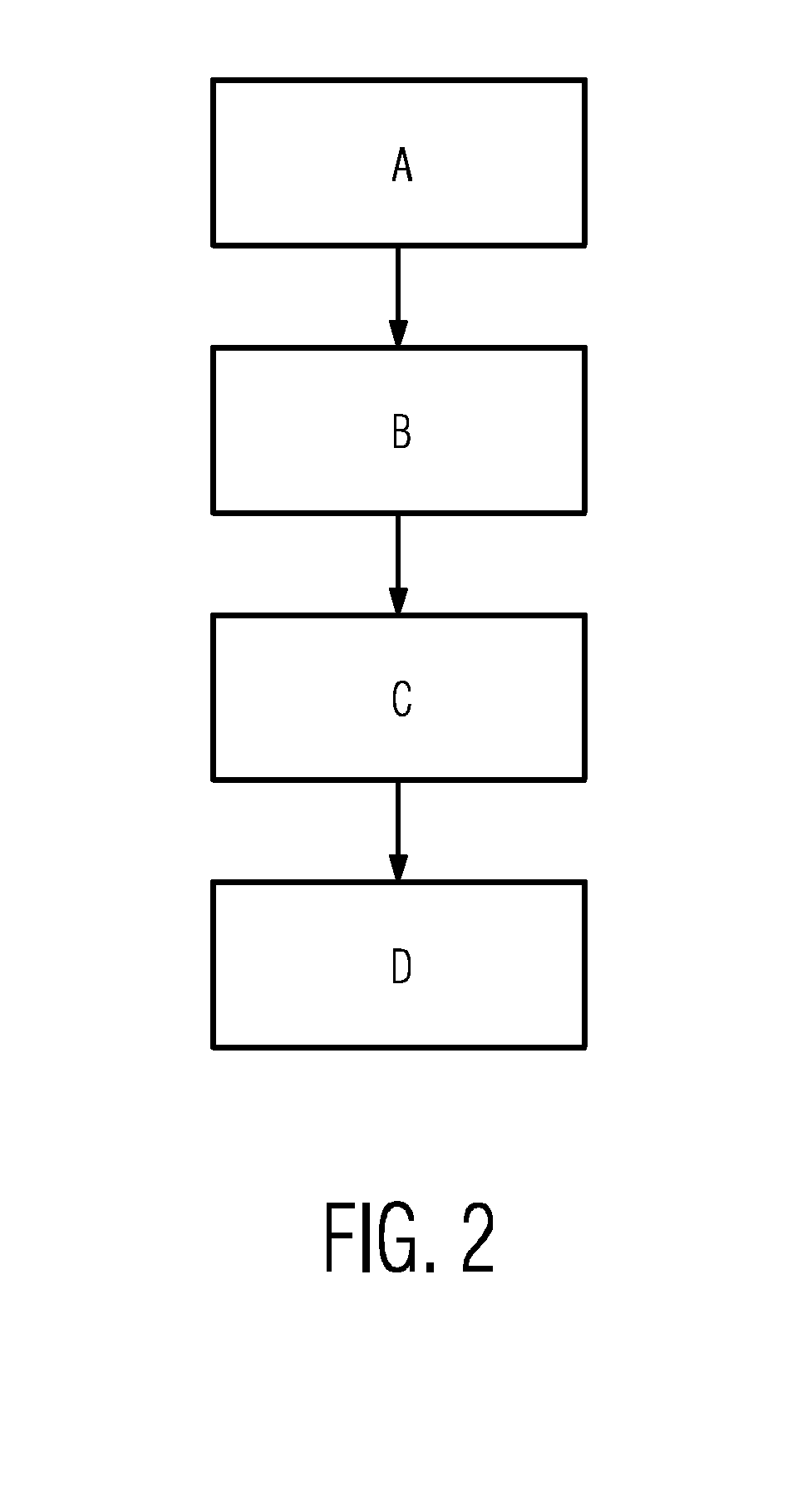Method of transmitting data, electronic device and transponder
a technology of electronic devices and transponders, applied in the near field of read/write/interrogation/identification systems, instruments, indirect connection of subscribers, etc., can solve the problem of relative high power consumption of transponders, and achieve the effect of satisfying performance, reducing the energy consumption of each transponder, and weakening the field
- Summary
- Abstract
- Description
- Claims
- Application Information
AI Technical Summary
Benefits of technology
Problems solved by technology
Method used
Image
Examples
Embodiment Construction
[0031]FIG. 1 shows a reader 1 and a transponder 4 and FIG. 2 shows a flow chart illustrating the operation of the reader 1 transponder 4 system of FIG. 1. In this exemplary embodiment, the transponder 4 operates at low or high frequencies less than 30 MHz, such as 125 kHz or 13.56 MHz.
[0032]In this embodiment, the reader 1 comprises a central processing unit 2 connected to a reader antenna 3. The transponder 4 comprises a substrate 5, a transponder antenna 6 attached to the substrate 5, and an integrated circuit 7 attached to the substrate 5 and connected to the transponder antenna 6. The integrated circuit 7 is an example for an inventive electronic device and comprises a demodulation / modulation stage 8 connected to the transponder antenna 6, a processing device 9 connected to the demodulation / modulation stage 8, a memory 10 for storing data connected to the processing device 9, and an internal clock signal generator 11. The processing device 9 may, for instance, be a microprocesso...
PUM
 Login to View More
Login to View More Abstract
Description
Claims
Application Information
 Login to View More
Login to View More - R&D
- Intellectual Property
- Life Sciences
- Materials
- Tech Scout
- Unparalleled Data Quality
- Higher Quality Content
- 60% Fewer Hallucinations
Browse by: Latest US Patents, China's latest patents, Technical Efficacy Thesaurus, Application Domain, Technology Topic, Popular Technical Reports.
© 2025 PatSnap. All rights reserved.Legal|Privacy policy|Modern Slavery Act Transparency Statement|Sitemap|About US| Contact US: help@patsnap.com



